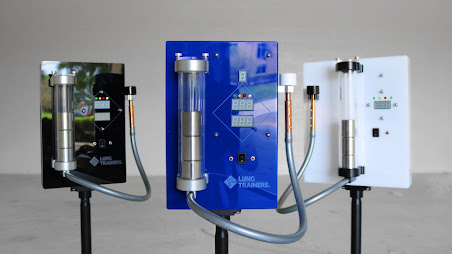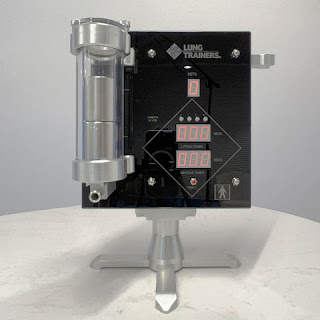Breathing Exercises Relieve Anxiety
Breathing exercises equipment is very beneficial for soothing the mind and reducing anxiety. This drug-free method of activating the parasympathetic nervous system is available to everyone; all you have to do is learn how to use it.
The sympathetic nervous system is engaged when the body is stressed or anxious, and it puts us in 'fight or flight mode. This system is a critical response that our bodies have in the event of a short-term emergency. It enables us to perform at a greater level – run faster, strike harder, and stay awake longer – but people nowadays tend to have it on more than off. Because our breathing is directly affected by the sympathetic nervous system, utilizing breathing exercises to lessen breathing soothes both the mind and body. You can utilize breathing exercises to overcome the sympathetic nervous system's 'fight or flight state and avert a full-blown panic attack if you are anxious or agitated.
The majority of people who suffer from stress and anxiety can sense it building inside them. You can use these easy but powerful breathing techniques to settle things down when you see the first signals approaching - a racing heart; butterflies in your stomach; a lump in your throat; shortness of breath -
A small breath can be held for a long time. Try some small breath holds if the diaphragmatic breathing and relaxation exercise above does not completely alleviate your anxiety and return you to a state of calm. Take a little breath in and then a small breath out through your nose (note, these are not big breaths). Hold your breath for a count of 5 on the out-breath, then let go and slowly breathe in through your nose again. Then, as indicated before, take ten comfortable breaths into your diaphragm. For roughly five minutes, repeat the five-second breath holds followed by ten relaxed diaphragmatic breaths. This should trigger the parasympathetic nervous system, which will counteract any resulting terror.
Three types of breathing exercises can be used to overcome anxiety.key things to remember. To begin, the inhale must be done through the nose. In reality, every breath we take should be taken through our noses because that is what the nose was created for. However, because it is difficult to move a lot of air through the nose, nasal breathing will help you avoid hyperventilating. You can exhale via your mouth with pursed lips if you want, as some individuals find a protracted exhale conducted in this manner incredibly calming.
Relaxation is the second factor to consider. If your muscles are tense and making it tough to activate your diaphragm, you won't be able to slow your breathing and quiet your thoughts. So, learn to recognize muscle tension and relax the muscles that are prone to stiffen up when you're anxious or stressed. These are usually the neck and shoulder muscles, which cause you to stand with your head forward and shoulders elevated. With each breath, the chest will often move up and down like a pump handle. You must be aware that this is occurring and make every effort to avoid these postural shifts. Your upper body should become very quiet and loose, and your abdomen should be relaxed as the diaphragm pulls it out on each calm breath in-breath.
Source Url :- https://sites.google.com/view/lungtrainers09/home


Comments
Post a Comment